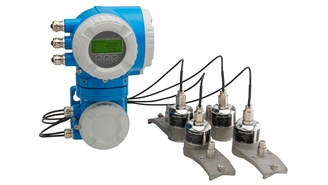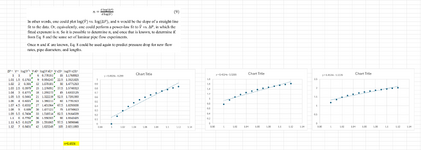Mechanical Farmer
Mechanical
- Mar 12, 2025
- 33
Looking for recommendations for a clamp on flow meter for polymer melt. Prefer adjustable from 1" to 4" pipe size and non nuclear.
Follow along with the video below to see how to install our site as a web app on your home screen.
Note: This feature may not be available in some browsers.

I'm just exploring, I was looking at the E+H Pierre mentioned above but that was just based on a quick google search. We've also looked at Vega Minitrac, but no everyone is comfortable with the idea of radiation.The biggest issue with UT clamp on meters will be the lubricant or coupling between sensor and pipe. But probably also need to check if the fluid is able to be measured that way depending on its sound attenuation.
what have you looked at so far?
Corriolis meter is prob best, but isn't a clamp on.
I was looking at this one. I didn't know there was the opportunity for testing. I've asked if my instrumentation guy has an account with them.
Proline Prosonic Flow P 500 ultrasonic clamp-on flowmeter
The proven sensor Prosonic Flow P can be installed close to elbows, expansions or constrictions in the pipe and still maintain the same measurement accuracy. Even measurement of abrasive, corrosive or toxic fluids is no problem for the non-invasive clamp-on device. Prosonic Flow P 500 is mounted...www.casc.endress.com
Check with them, E&H and ask for a trial, unless they have experience with your product.
My 2 cents,
Pierre
Fair enough but you need to answer the question about temperature and why you need clamp on and whether ultrasonic will work in your fluid.I'm just exploring, I was looking at the E+H Pierre mentioned above but that was just based on a quick google search. We've also looked at Vega Minitrac, but no everyone is comfortable with the idea of radiation.
I've asked my instrumentation guy for suggestions. This is for a special project so I wanted to come to the table with some suggestions before approaching him.
I'm not going to be able to give any quantitative data regarding process.Fair enough but you need to answer the question about temperature and why you need clamp on and whether ultrasonic will work in your fluid.
Well temperature range at the very least. Your "high temperature" might not be mine and vice versa.
When you're talking to vendors then the first thing they'll ask is for properties of the fluid to see if works with their meter, plus velocity, density etc
An issue with ultrasonic clamp-on in general is whether there is documentation for a medium/material's speed of sound at various working temperatures.
Those clamp-ons that have a list of liquids to select from typically use the speed of sound for standard, 25 Deg C, conditions. Sometimes they'll have a compensating factor for water at 60 Deg C or 80 Deg C.
Whether a vendor has knowledge of your medium's sonic velocity at operating temperature might be an issue.

good to know something exists that give reliable results. I googled "German flow meter manufacturer." Of course that didn't narrow down the search very much.I set up flow control loops on hot high viscosity bitumen lines running 180-220degC with ultrasonic clamp on FT some 10years ago - cant remember the brand name , but it was some German company - worked as intended. They offered onsite troubleshooting assistance, which was re assuring.
This is for an industrial application in a novel process. What we have currently works, but I am trying to optimize the process.Is there a need in theorizing of the fluid properties? How are you going to prove those are relevant?
Why can't you provide a simple measurement of a controlled volume?
Or this is a thesis paper?
If this is a test set-up where you can fix the location of the input flow and then pipe the output to other test elements, I would be very tempted by either a Coriolis meter or some sort of PD meter tbh. This would be a used for initial testing but would likely be used to test viability of potential new feedstocks. I am hoping to keep all wetted parts clean between use so that is why I am interested in straight through piping. Coriolis MIGHT be an option, but I don't think that PD meters would be appropriate or just pump a defined volume and time how long it takes (simpler the better) To find my n value, I need to plot a curve of values at varying flow rates and differential pressures. This is at industrial scale, controlling throughput rates at the measuring instruments would be near impossible.
I don't know how the UT devices would like any flow which is laminar or non newtonian and may stick to the walls.
UT should prefer laminar. I don't know why the pseudoplastic nature would make a difference so long as it doesn't completely attenuate the sound waves.
I do believe at larger pipe sizes I will have stagnation on the pipe walls. I'm hoping at lower pipe sizes that is not an issue. (see my other post regarding non-newtonian rat-holing)
I realise you may have looked at those options and rejected it for some reason, but with what you're not able to tell us (even the temperature), it's not easy to second guess you I'm afraid.
I can kind of explain, or at least elaborate on things as questions arise. I know it would be difficult for anyone on this forum to track down where I work and what I'm doing, but unfortunately from the other direction, anyone looking into the company could relatively easily find this forum and any process information I provided, should I do so.
